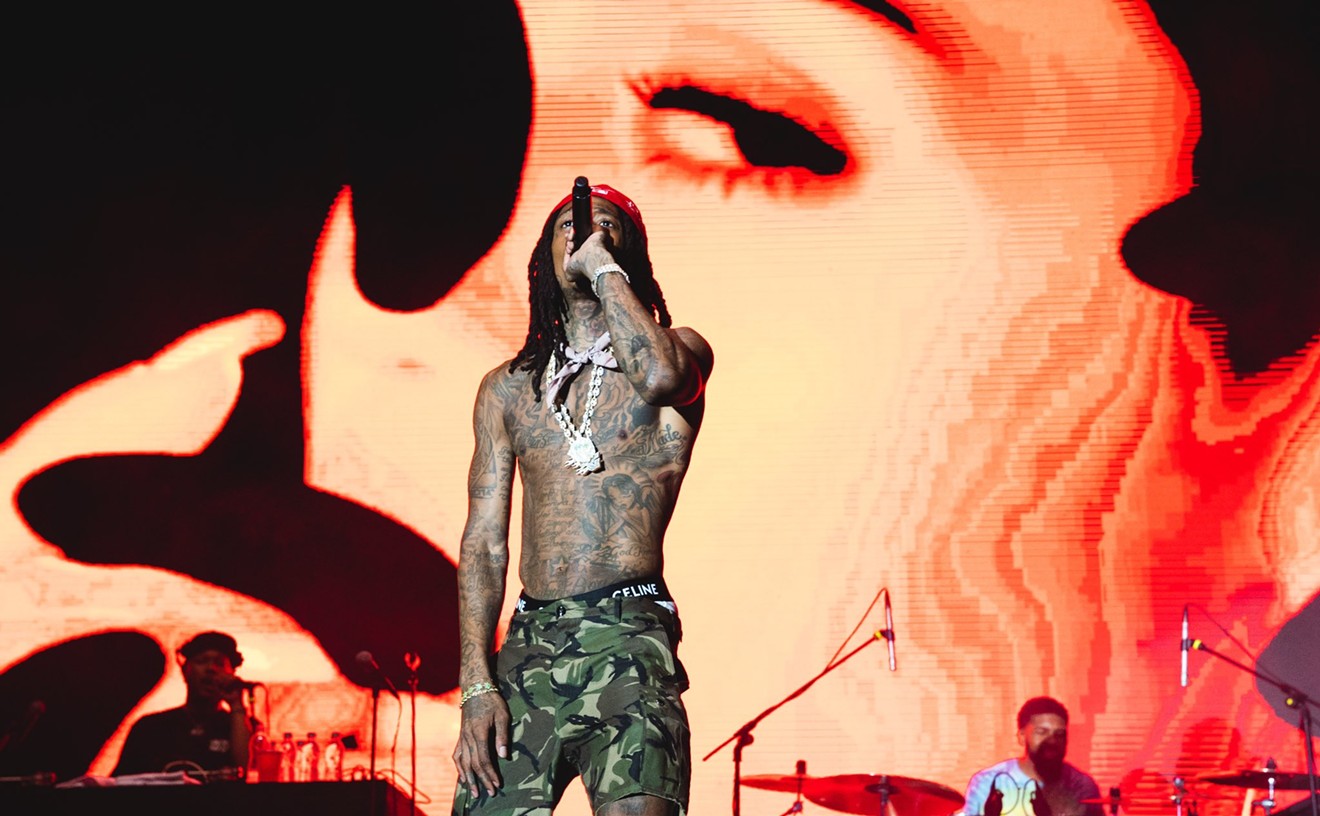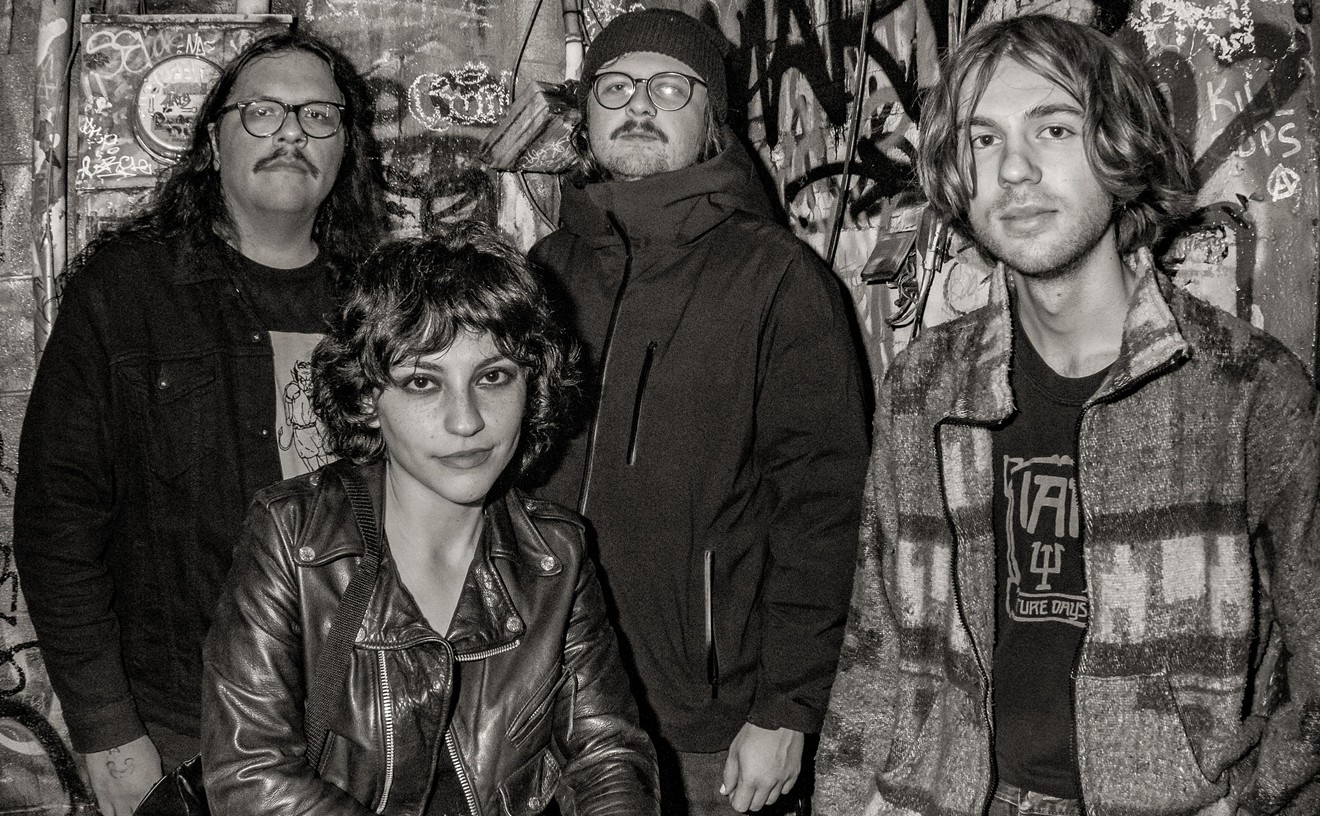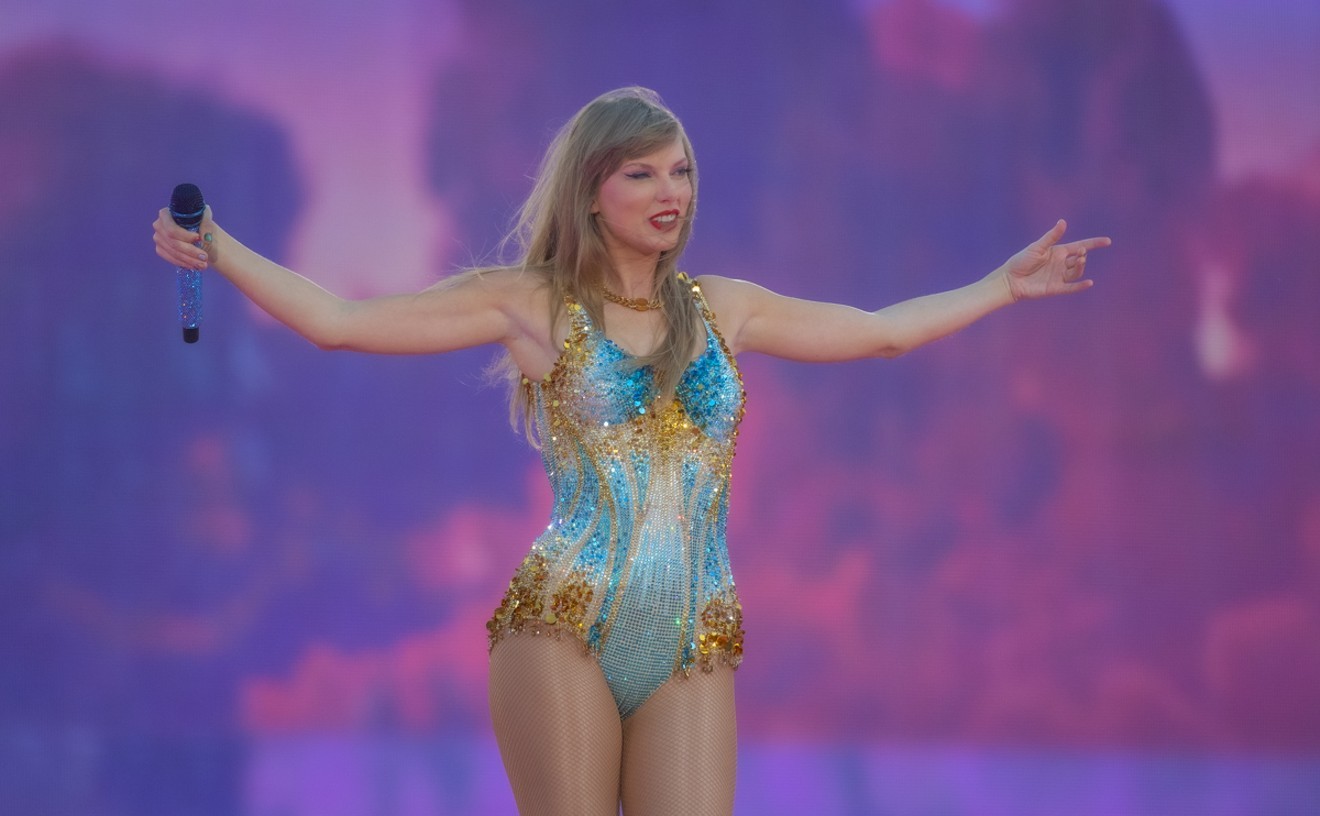Shoup's speaking voice sounds much like his horn: warm and gruff, yet tender, with a hint of an easygoing Southern drawl tempering its intensity. He starts and stops each sentence a few times, calling up and then discarding words like he does notes on his sax, chiseling away adjectives and asides until he slowly reveals the shape of what he's trying to get across.
"A big part of playing the music I do is being able to have this direct control over it," says Shoup from his Seattle home, "being able to shape it into coherent forms as I play, instantaneously. That's part of the real beauty and joy of it."
Joy and beauty have informed and illuminated Shoup's music for almost a quarter-century. From sculpted noise experiments to sax-and-drums opuses to collaborations with Sonic Youth's Thurston Moore, he has been releasing music since 1981, when his self-produced LP Scree-Run Waltz became an instant artifact of avant-garde esoterica. Born in 1944 and raised in Charlotte, North Carolina, Shoup spent his formative adolescence immersed in the sounds of the golden age of post-bop jazz -- and the improvisational heart that beats at its center.
"Since I'm a guy who grew up listening to black music in the South, the blues and jazz and R&B, I incorporate that into my playing," he says. "I got introduced to free jazz in the late '60s, when I was living in Atlanta: late Coltrane, Art Ensemble [of Chicago], Pharoah Sanders. I didn't play music then, though. I kind of felt like free jazz was the domain of black musicians, and I'm white. But my voice is definitely influenced by African-American music."
Shoup's musical epiphany came in 1972, with his first listen to the Music Improvisation Company. The group was headed by the radical English players Evan Parker and Derek Bailey, whose innovations paved the way for much of the post-jazz experimental music that followed. "I was living in Colorado by then, and that was where I first heard the Music Improvisation Company record," Shoup says. "It's what you might call non-idiomatic, free improvisation. It wasn't jazz-based. They were trying to find some new ways of improvising. I realized that was the kind of music I wanted to know about, and the only way I could know more about it was by playing it."
Shoup had relocated to Manitou Springs and then to Colorado Springs in the early '70s, a move that was as spiritual as it was spatial. "It's hard to leave the South," he explains. "I was 28, and a friend of mine had just moved out to Colorado. He kind of sold me on the mountains, on the different kind of atmosphere. I came out and started opening up to new music, opening up to this new vision of myself as an artist."
Shoup, of course, might have picked a more fertile artistic field to plow than Colorado Springs in the 1970s.
"Around '73 or '74, I was just so sick of the stifling concept of music in that town. Eagles cover bands, basically. I did hear some really good music at the old Ebbets Field in Denver, though. I saw Pharoah Sanders there, Captain Beefheart. But everything else was all sweet and nice, all Rocky Mountain High. So I found a group of guys and instituted this kind of free-form band, the Creative Music Ensemble. I was still developing some chops on the sax, so I wasn't a player yet; I was just the instigator. I had them play a number of gigs, and it just outraged and pissed people off. I was sort of the cheerleader, pushing these guys even in the face of hostility," Shoup remembers, chuckling. "People didn't know what to make of it. It was kind of like Mahavishnu meets Merzbow or something."
The Creative Music Ensemble wasn't the only front on which Shoup was active. He convinced Colorado College's radio station, KRCC, to give him a weekly three-hour show -- or, as Shoup puts it, "a weekly barrage and assault." Besides spinning vinyl from his own extensive collection of jazz and experimental music, he began using the studio itself as an instrument, manipulating multiple turntables and mixing in guest musicians who would improvise over the records, all live on the air.
"It was a real exciting time. I was able to get a lot of my ideas out there," says Shoup. Finally feeling proficient enough on the saxophone to front his own group, he formed a trio with Ross Rabin and Keith Gardner and began playing the odd show across the Front Range. "We played everywhere: bars, schools, the public library. I had a saxophone and a couple of beat-up electric guitars. Ross had some pickup mikes on his drums so that he could make them sound kind of quasi-electronic. And then I had a number of weird metal-sculpture things that I would put a contact mike on and then play with files. Metallic noisescapes, that was our thing. We just let it rip."
Shoup and Rabin recorded and self-released the epochal Scree-Run Waltz in 1981; it was considered to be a minor milestone in the evolution of independent, improvised music. "It was recorded live in Denver, in a place called the 15th Street Gallery," recalls Shoup. "We weren't part of any kind of movement or whatever. We were just sort of determined to make the music that we wanted to make. I was interested in developing my own voice, my own way to play that wouldn't feel either imitative or inauthentic. I was really able to find that in Colorado."
In 1983, Shoup left the Rockies to return to the South -- this time Birmingham, Alabama -- with Davey Williams and La Donna Smith of the established improv group the Trans Duo. After touring Europe in 1985, he moved to Seattle, quickly becoming a fixture and agitator of that town's avant-garde scene. Besides helping establish the annual Seattle Improvised Music Festival, Shoup began issuing cassettes of his music once a year to document his work. In 1994 he started the group Project W; its eponymous 1996 release was rated in the top ten of the year by the jazz magazine Cadence. Though by his own account still "happily obscure," Shoup was about to accrue a new notoriety.
"I know a guy out here in Seattle who runs a record store, and he said Thurston Moore had been in and bought a copy of one of my cassettes," says Shoup. (Sonic Youth's Moore is known for his benefaction of unsung heroes of the underground.) "So the guy at the record store goes, 'Ah, you know Wally Shoup?' and Thurston goes, 'Of course. I'm a Shoup completist.' I thought it was a joke. But sure enough, I wrote him an e-mail, and he wrote back right away and said, 'Oh, yeah, I'm a big fan of yours.'"
Moore, a collector of Shoup's work since picking up a copy of Scree-Run Waltz in the '80s, asked Project W to open for Sonic Youth in Seattle in 1998; the recording of Shoup's set was released under the title Obliquity by Shrat Field Recordings, a label owned and operated by Denverite Eric Allen of the Apples in Stereo and PW3. After a stunning 2000 collaboration with Moore called Hurricane Floyd, Shoup teamed up with Project W drummer Jeph Jerman for 2001's Rescue Mission. Then, over the summer of 2002, Moore took Shoup on the road as part of a quartet playing free improvisation, which resulted in the roaring, gorgeous Live at Tonic. "It's a document of a live gig, and it's real high-energy, high noise," says Shoup. "It's pretty much free jazz meets skronk guitar meets propulsive, intense, polyrhythmic drumming. It's a ride."
Shoup's newest combo is the Wally Shoup Trio, and its debut CD, Fusillades and Lamentations, continues his tradition of daring, warmth and soul. "I'm not quite as abstract as I used to be. On my new stuff, I'll play motifs and melodies and occasionally even a tune," says Shoup. "I like contrasting elements of noise with more conventional ideas of lyricism. I see noise as just another element to play with, just another texture or color or detail. If you open up your ears and broaden your idea of what music is, you can listen to your environment and hear it as music, like the daily grind of a city sidewalk or a train going by. You listen to it just as sound. You start hearing coherence in the randomness of it."
What distinguishes Shoup's approach from that of much of the free-jazz canon is its sheer humanness. His lines spiral in many dimensions at once, sometimes drifting and graceful, other times jagged as broken speech, with a tone that's pure and raw. Above all, though, is his almost biochemical sense of balance and form within freedom. Still, Shoup would rather you think less and listen more.
"Improvisation is not about sitting back and being intellectual," he says. "It's not about holding back. It's about the other players feeding you ideas and feeding off of you. The ideal of this music is to get to this place where you really feel like the music's playing you. It's all about being in the moment. The immediacy makes it more about human relations and human communication. The audience is right there when it's happening, when it's being created, instead of being sold a product."
When asked if he considers himself a jazz musician, the usually effusive Shoup is stumped. "That's a tough one," he admits. "If by 'jazz,' you mean a music based on improvisation and the moment, then I'm a jazz musician. If you're talking about a specific kind of chord-based, syncopated 4/4 music, then I'd say no, I'm not. But there's a lot in my playing that I would call jazzy. There's a swing to it, and there's certainly a lot of African-American influence. I don't play in what you might call an idiomatic fashion, but I feel a real kinship with the spirit of jazz."
Whatever the name tag, Shoup's music throbs and surges with a primal essence that speaks of both tradition and chaos, ritual and abandon. "I don't like the idea of jazz being put in a museum. I don't like when it's implied that there's something forbidding about this music, or that you have to have some sort of master's degree in music to get it. That's just not the case," says Shoup. "This music is all about unleashing real positive, fiery kinds of energies. It's all about honesty and realism and excitement. I'm interested in playing gigs that make people feel energized and uplifted when they leave. That's the only kind of music I want to do."










